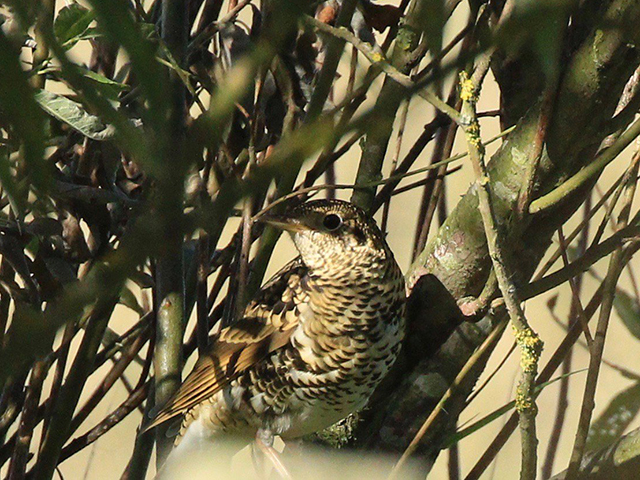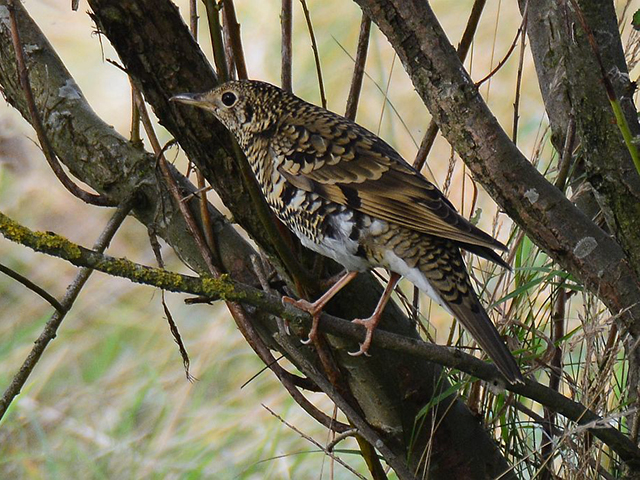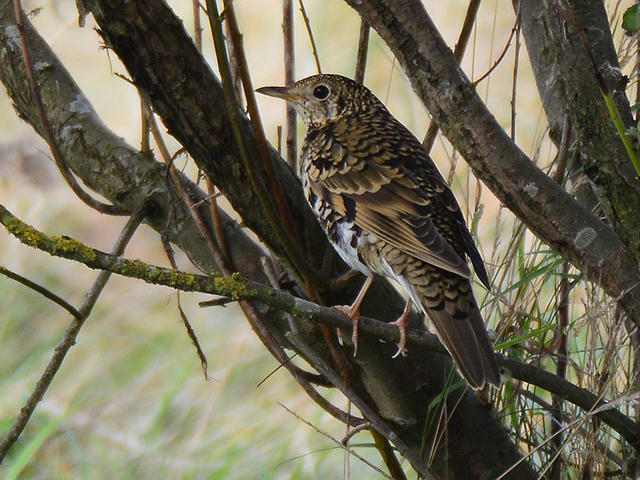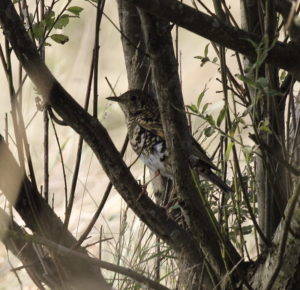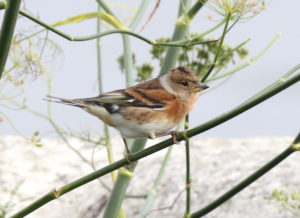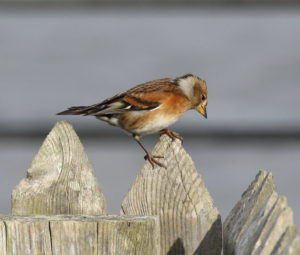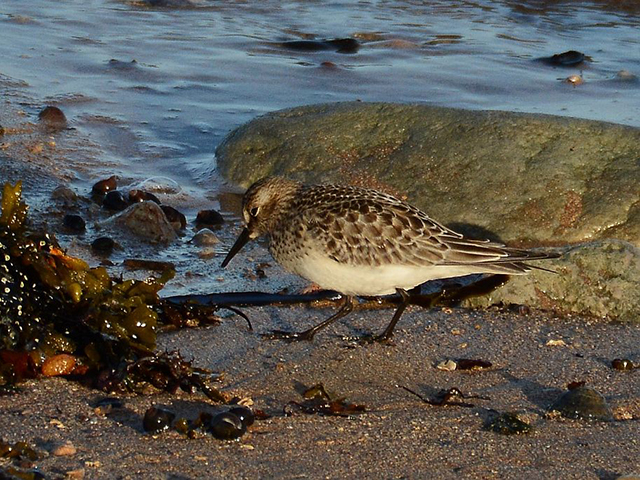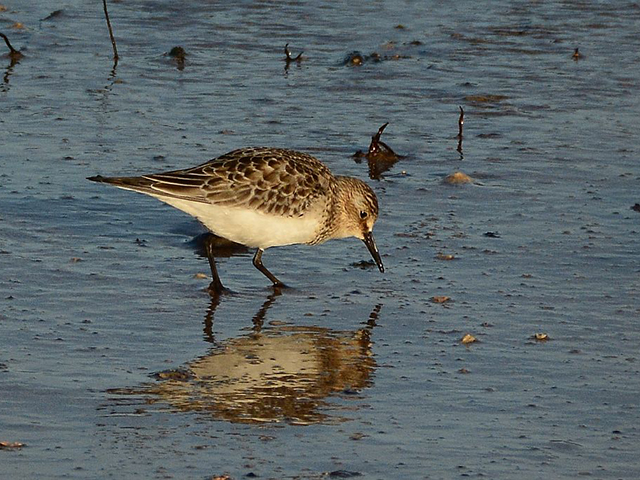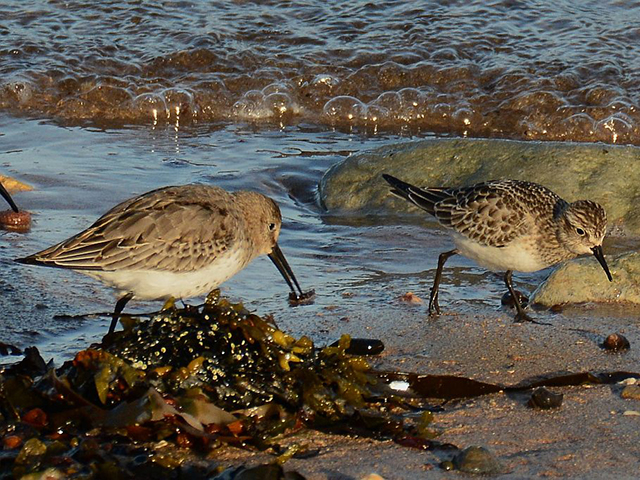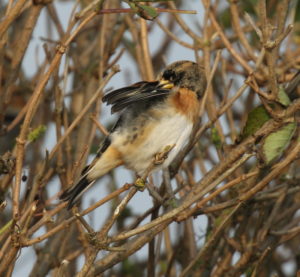
As the run of easterly winds continued this month, with rain all morning today, the island was again a great place to be, with hundreds of migrant birds present or passing through. Heading straight for the village and the Vicar’s garden early morning, I found the lawn carpeted with Redwings, around 50-60 feeding here with more in the trees and overhead. Constant flocks arrived from the north east, some dropping into the village trees and lawns and others heading straight on, south west over towards the mainland.
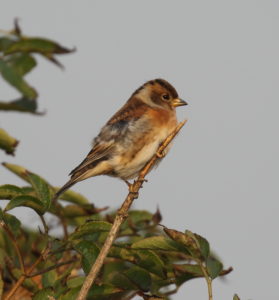
Many Fieldfares too were arriving and a huge flock estimated by several people to contain around 1,000 birds flew over towards Fenham Le Moor, with other lesser sized flocks following or pausing on the island to rest and feed. 100+ Redwings were later feeding in the public car park. In the course of the day, a minimum of 2,000 Fieldfares and 1,500 Redwings were noted. Back at the Vicar’s, and 15 Brambling were in a tree when a large flock arrived to join them, dropping in from a fair height, 70-80 birds, fantastic! These too soon flew off west over the mudflats. Small groups of Brambling were seen throughout the day and a large flock of 200+ fed in stubble near the public car park, 60 in a bush at one point. A Red breasted Flycatcher seen in bushes adjoining the car park. Also in the trees at the Vicar’s were 4 Meally (Common) Redpolls, with 2 more seen at Chare Ends.
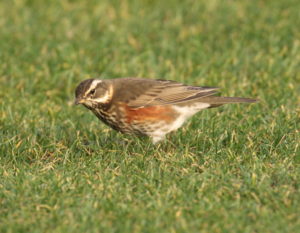
Goldcrests were once again much in evidence on the island, and with them in the Vicar’s garden I found a splendid male Firecrest picking insects from the underside of leaves. A Yellow Browed Warbler too here and several Blackcaps. Around 20 Robins on the lawn with Song Thrushes and Blackbirds. Near the school, many Goldcrests were feeding in the grass and bushes along a small path, with 16-18 Chiffchaffs, more Robins and thrushes, with again a constant passage of the latter overhead. More Blackcaps here, with 3 bathing in a puddle, and the total for the day reached 37. The main village street, lined with trees held many more Goldcrests, with several Blackcaps and Chiffchaffs.

Moving down to the Lonnens, the Great Grey Shrike remained, hunting from it’s wire perch, with a second further down Straight Lonnen. 60 more Brambling fed in the strawberry field here among dozens of Redwings and Blackbirds. Moving down the Lonnen a Ring Ouzel alighted on a bush top but quickly flew off, 2 more over towards the Crooked Lonnen. A female Sparrowhawk eyed the abundance of prey from it’s bush perch and the resident Barn Owl looked on. A Lesser Whitethroat popped up briefly. More Goldcrests here in bushes and in the grass. A dozen Chiffchaffs fed in the small cottage garden down Crooked Lonnen, one a very pale, grey bird.
On to the Chare Ends next, where more flocks of thrushes of four species lined the fences and bushes, others feeding along the path, yet more moving straight overhead. The large Linnet flock frequenting this area held 300+ birds, more Brambling calling with them. 40-50 Skylarks here too.
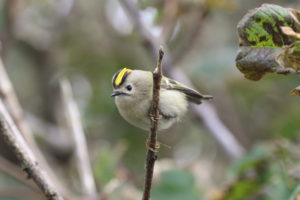
Down at Snook where two Pallas’s Warblers remained, with many Goldcrests and more Chiffchaffs in the plantation and garden. Again, thrushes overhead.
Back for another look at the Vicar’s garden area, where on the cliffs below 2-3 Black Redstarts sallied out flycatching in the now warm sun. More Robins and Chiffchaffs on the rocks at high tide. Then into the cliff top weeds a group of six Siskins arrived to feed at close range. A Lesser Redpoll nearby.
The water here held the noisy flock of perhaps 2,500 Brent Geese. St Cuthbert’s Island provide a roost for 400+ Oystercatchers and 350-360 Bar Tailed Godwit.
All in all, a fantastic 11 hours spent on the island.
A.S.Jack
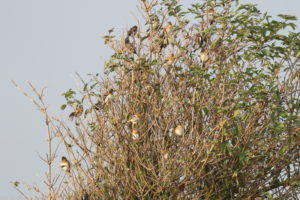








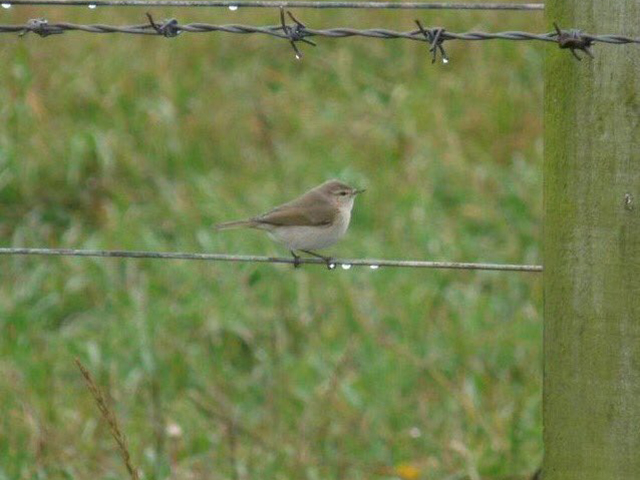
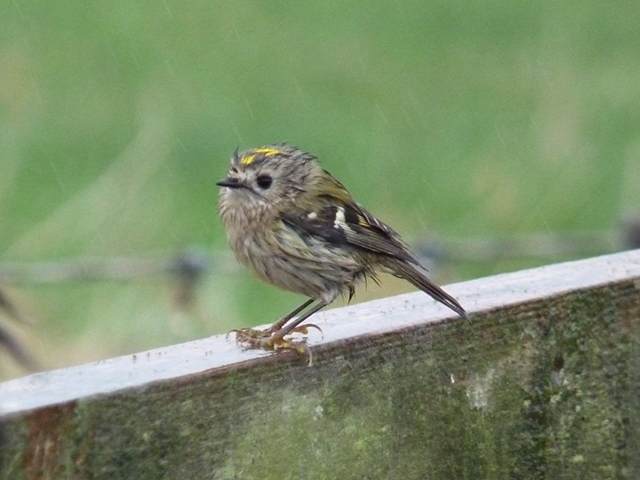
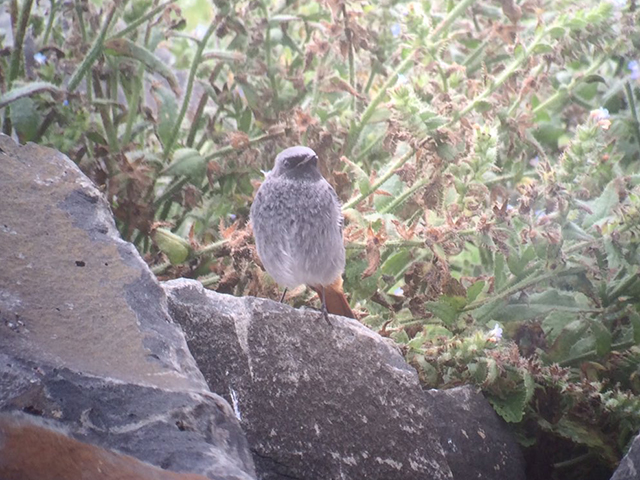
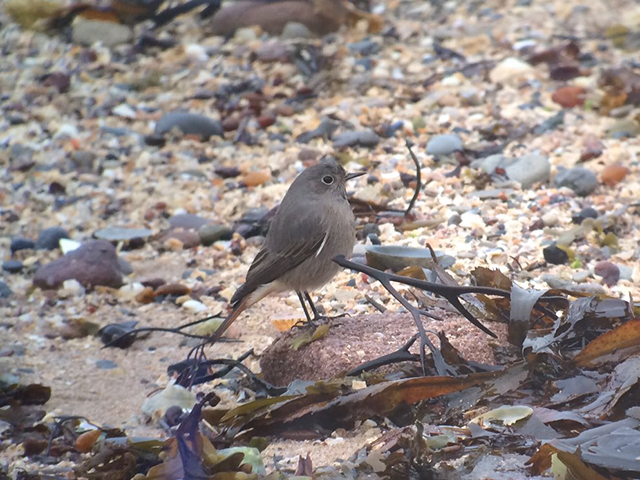


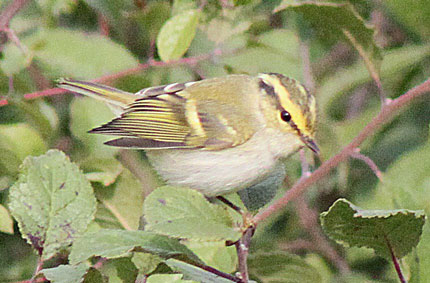
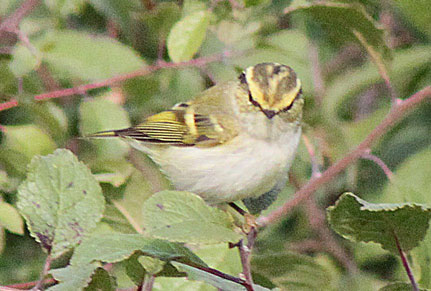
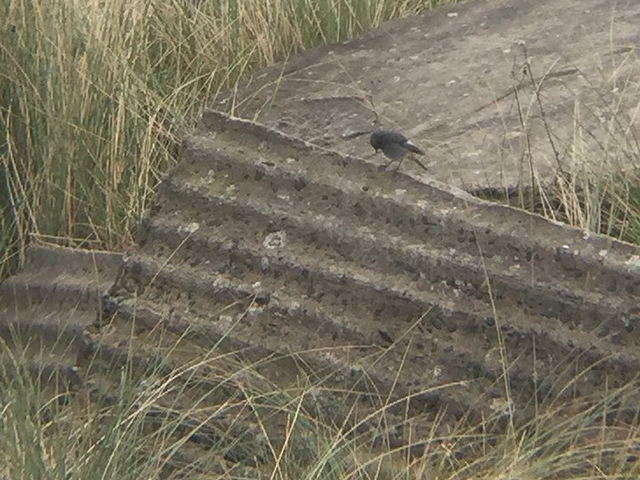
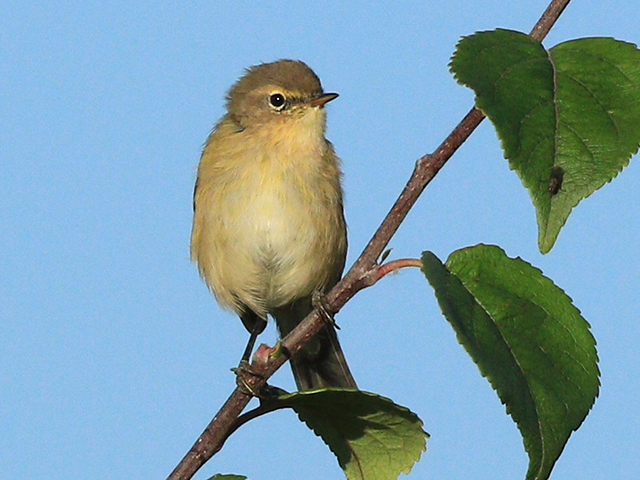
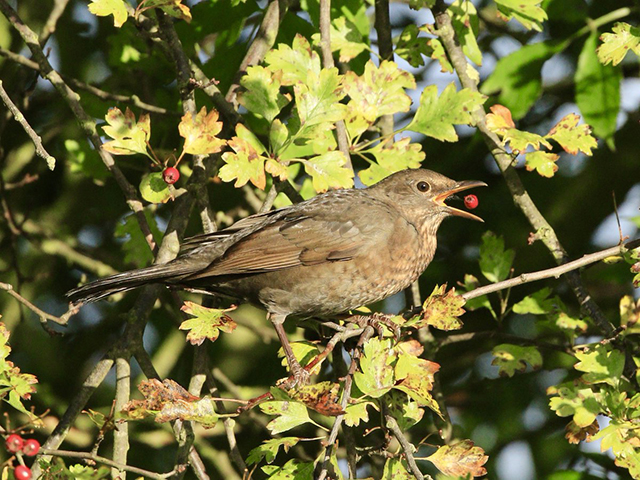
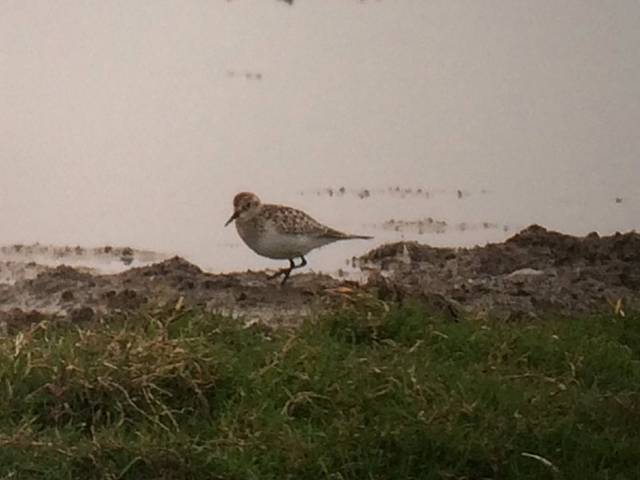



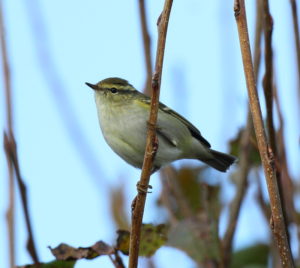
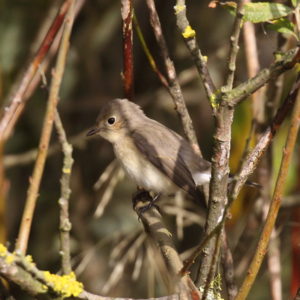 With temperatures in the sun reaching 18 degreees, several Skylarks briefly sang and around 700 Golden Plover fed in fields with Lapwings. On the mud flats Brent Geese numbers continue to rise and large flocks of Bar tailed Godwits and Knot took to the air as the tide rose. A Spotted Redshank reported near the causeway and several Greenshanks and Little Egrets were feeding here too. A flock of at least 250 Linnets were in stubble at Chare Ends, spooked by a passing Kestrel.
With temperatures in the sun reaching 18 degreees, several Skylarks briefly sang and around 700 Golden Plover fed in fields with Lapwings. On the mud flats Brent Geese numbers continue to rise and large flocks of Bar tailed Godwits and Knot took to the air as the tide rose. A Spotted Redshank reported near the causeway and several Greenshanks and Little Egrets were feeding here too. A flock of at least 250 Linnets were in stubble at Chare Ends, spooked by a passing Kestrel.